The GIGABYTE Z170X-Ultra Gaming & Z170X-Designare Motherboard Review
by E. Fylladitakis on December 28, 2016 10:00 AM ESTGA-Z170X-Ultra Gaming Board Features
The core selling features of the GA-Z170X-Ultra Gaming are its Thunderbolt 3 support and U.2 port. Thunderbolt 3 supports up to 40 Gbps data rates (over an active cable), USB 3.1 (up to 10 Gbps) and Mini DisplayPort 1.2. The U.2 support is, for the time being, mainly limited to Intel's 750 series SSD drives and a few Samsung Enterprise (PM953) drives, however we want to see more consumer focused drives coming to the market in the near future.
| GA-Z170X-Ultra Gaming | |
| Warranty Period | 3 Years |
| Product Page | Link |
| Price | $150 |
| Size | ATX |
| CPU Interface | LGA1151 |
| Chipset | Intel Z170 |
| Memory Slots (DDR4) | Four DDR4 Supporting 64GB Dual Channel Up to 4133 MHz |
| Memory Slots (DDR3L) | None |
| Video Outputs | HDMI 1.4 DisplayPort 1.2 |
| Network Connectivity | Intel I219-V |
| Onboard Audio | Realtek ALC892 |
| PCIe Slots for Graphics (from CPU) | 2 x PCIe 3.0 (x16, x8/x8) |
| PCIe Slots for Other (from PCH) | 1 x PCIe 3.0 x4 3 x PCIe 3.0 x1 |
| Onboard SATA | Six, RAID 0/1/5/10 |
| Onboard SATA Express | Two, RAID |
| Onboard M.2 | 1x PCIe 3.0 x4 or SATA, RAID 0/1, NVMe |
| Onboard U.2 | 1x PCIe 3.0 x4 |
| USB 3.1 | 1 x Type-A 1 x Type-C Intel DSL6540 (Alpine Ridge) Controller |
| USB 3.0 | 4 x Rear Panel 2 via headers |
| USB 2.0 | 2 x Rear Panel 4 via headers |
| Power Connectors | 1 x 24-pin ATX 1 x 8-pin CPU |
| Fan Headers | 1 x CPU (4-pin) 1 x Pump (4-pin) 3 x CHA/SYS (4-pin) |
| IO Panel | 1 x Combination PS/2 2 x USB 2.0 4 x USB 3.0 1 x USB 3.1 Type-A 1 x USB 3.1 Type-C 1 x Network RJ-45 HDMI 1.4 Mini DisplayPort 1.2 Mini DisplayPort In Audio Jacks Optical Sound Cable Insert |
| Other Features | Thunderbolt Header TPM Header Front Audio Header |
In The Box
We get the following:
- Driver Disk
- Manual
- Rear IO Shield
- Four clear SATA cables
- Easy Front Panel Connector
- Flexi-SLI cable
- Two long cable straps
- Cable labels
- Case badge
- Door notice
The bundle of the GA-Z170X-Ultra Gaming is good considering the price range of the motherboard. GIGABYTE includes cable labels and two large cable straps that can be especially useful into systems with a large number of devices installed. There are four SATA cables included, even though the motherboard supports more devices, but four should be enough for the majority of this model's target group. We did not find any USB 3.1 front panel attachments, Thunderbolt 3 or Type-C cables included, but that is not unexpected with a keyboard around this price range. As with the target market, the door notice is there as a fun extra, as is the case badge.
Visual Inspection
Much of the company's designing efforts were focused on aesthetics. It is an all-black board, with entirely black, plain heatsinks. It has red LEDs installed, subtly illuminating the system area. GIGABYTE is also implementing "shielding" on the PCIe and DIMM slots, in the form of a metal brace. The metal brace assists in rigidity, preventing wrapping and damage due to excessive force, weight, or the combination of the two. It can be highly practical for users who transport their system or change cards/DIMMs often.
The GA-Z170X-Ultra Gaming is built on a six-layer PCB. There is no mention of the thicker copper layers that some of the Gigabyte Ultra Durable series motherboards had but there are a few other improvements and features aimed to improve the long term reliability of the motherboard. The metallic braces on the DIMM and PCIe slots is such a feature and it does seem to be working well. The PCIe slots have two locking brackets and the shield is soldered onto the board, significantly increasing the strength of the slots and reducing the chances of a heavy card tearing the slot off the board while transporting the system. There are only Fujitsu solid-state capacitors on the GA-Z170X-Ultra Gaming.
The general layout of the motherboard is versatile and functional. Gigabyte expanded the space between the two primary PCIe 16x slots, allowing better cooling when up to two cards are installed. Despite the expanded space between the slots, the designer placed the M.2 slot between the CPU socket and the first PCIe slot which, depending on the cooling system installed, might allow for easier access to it when the system has been fully assembled. The M.2 slot supports up to 110 mm (22110 type) M.2 drives. There are four fan headers, plus an extra header for a pump. The CPU fan header and the pump header can be seen together to the left of the DIMM slots. This combination should be highly functional for advanced users that combine liquid cooling solutions with air cooling. The three system fan headers are found to the right of the DIMM slots, the top left corner and to the bottom right of the motherboard. We can also notice a "demo LED" header next to the TPM connector, but Gigabyte does not mention anything about it into the board's manual or in their website.
A look at the rear panel of the GA-Z170X-Ultra Gaming reveals a PS/2 port, two USB 2.0/1.1 ports, four USB 3.0 ports, a LAN cable connector, five 3.5 mm audio jacks and one optical audio cable insert, an HDMI 1.4 connector, one Mini DisplayPort 1.2 and one Mini DisplayPort In, one USB 3.1 Type-C and one USB 3.1 Type-A connector. Most new motherboard tend to have HDMI 2.0 connectors nowadays, but the use of an HDMI 1.4 on a motherboard aimed towards gamers is not a significant omission, as no gamer would ever dream about running games at a 4K resolution using the onboard graphics. It does become an issue if the user wants to connect a secondary device, such as a 4K TV, on the onboard graphics card.
Removing the heatsinks, we found that the chipset heatsink is barely making contact with the chipset core. The chipset however does not have high cooling requirements; with the exception of serious overclockers, who are certain to at least properly add quality thermal paste there, this should not be an issue for typical users.
Having a closer look at the CPU power delivery circuit, we can see an Intersil 95856 controller driving a combination of Vishay SIRA18 and SIRA12 MOSFETs. It might appear as if the motherboard has a 7-phase CPU rail but remember that modern CPUs require more than one voltage. Specifically, the 1151 CPU requires four different input voltages (Core, I/O, Graphics and System). This motherboard has only a 2-phase Core rail and a 2-phase Graphics rail, which do get the job done but are not exactly ideal for overclocking. A two-phase circuit using Vishay SIRA12 MOSFETs powers the RAM modules. Near the I/O panel we can see the Intel's DSL6540 (formerly known as Alpine Ridge) Thunderbolt 3 controller, the Intel I219V network controller, the TPS65982 USB Type-C power delivery controller and the NXP PTN3360DBS HDMI/DVI level shifter. The Realtek ALC892 is beneath a small metallic heatsink/shield that reads "high definition audio". An iTE IT8628E provides onboard monitoring and thermal controls. Numerous Asmedia ASM1480 multiplexer chips can be found thorough the board for managing the PCIe lanes.


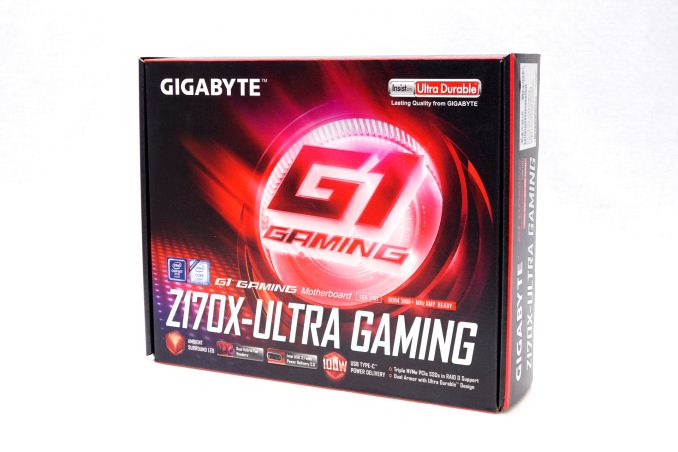
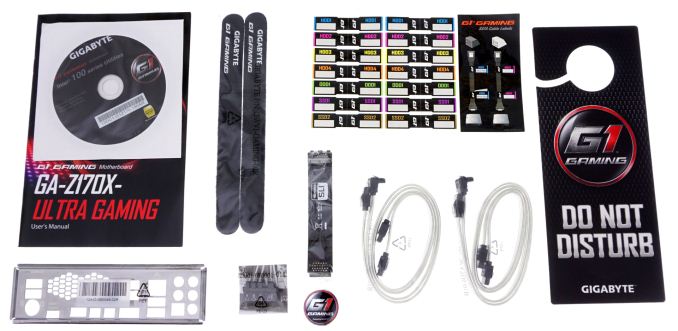

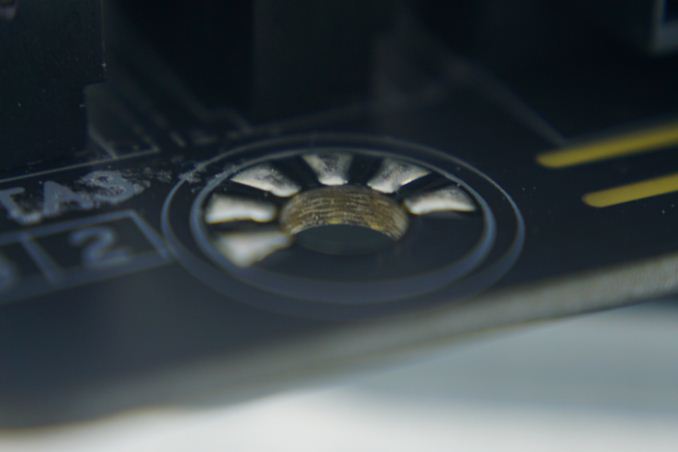
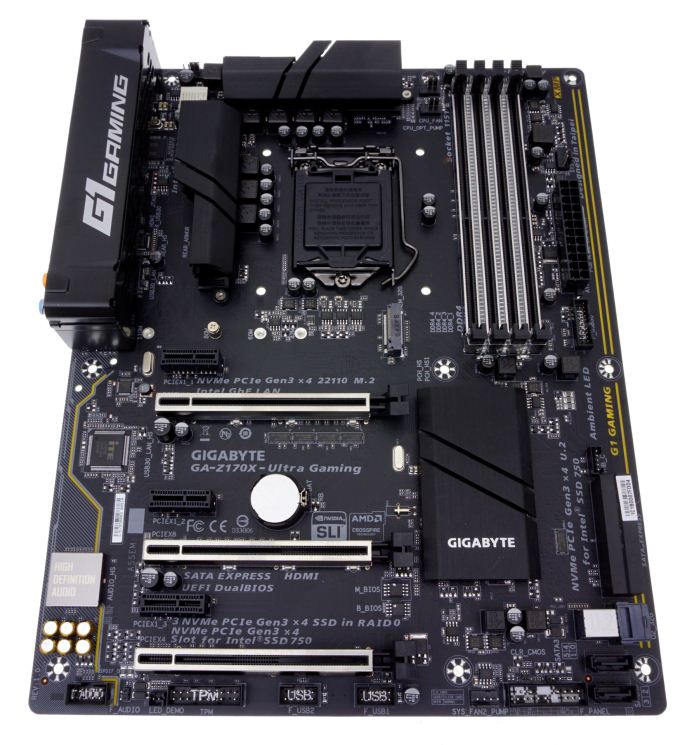
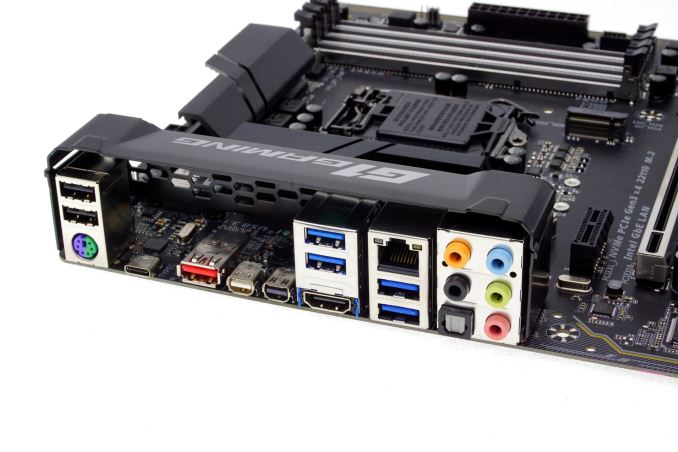






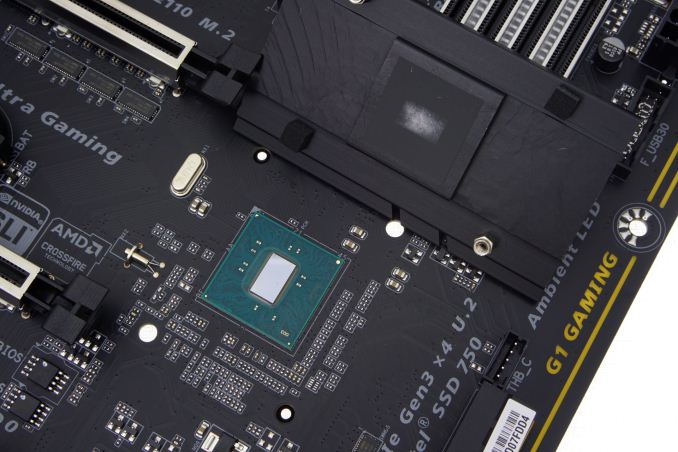
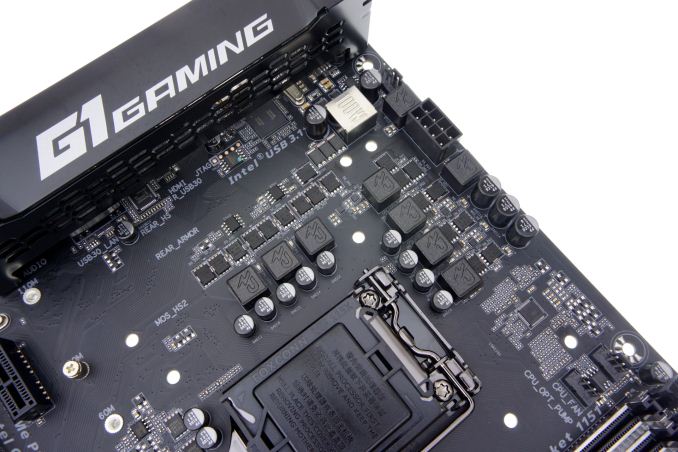








28 Comments
View All Comments
sweeper765 - Wednesday, December 28, 2016 - link
"If you want to install a PCIe x4 device, a U.2 drive and a M.2 drive at the same time, the SATA connectors will all be inoperable."I hope that will change with Z270, at least allow a full speed M.2 drive and all sata ports at the
same time.
Otherwise i feel we are moving backwards with these chipsets. Severe lane limitations, fewer and fewer rear usb ports, dual network adapters only on selected few (and expensive) motherboards.
BenJeremy - Wednesday, December 28, 2016 - link
Strange. I have the Gigabyte Z170X Gaming 5, and I have both M.2 slots used (RAID-0 nvme with 2 Plextor M8pe sticks), and I still had the use of my SATA slots - though the manual implied I would not.shabby - Wednesday, December 28, 2016 - link
Whats next... please remove 2 dimm's if you want to use sli/crossfire? This lane limitation is annoying.Duncan Macdonald - Wednesday, December 28, 2016 - link
Agreed - even for non-SLI use there are not enough PCIe lanes - 1 high end graphics card uses 16 lanes leaving 4 lanes for everything else. At a minimum a Z170 motherboard should have a setting that just uses 8 lanes for the graphics card and uses the remaining lanes to allow all the motherboard features to work at the same time.DanNeely - Wednesday, December 28, 2016 - link
The 16 lanes from the CPU are independent of the up to 20 lanes from the southbridge. I say "up to 20" because the 20 available high speed io ports that can be used for PCIe are shared with the ones used for sata and ethernet (the later is a mostly nominal factor though since a non-Intel NIC would need a port as a PCIe lane). Effectively this means you've got 13 PCIe lanes left from the chipset to share out among secondary PCIe slots, m.2, u.2, and SATAe ports. Theoretically another 4 could be used up for more USB3 ports; but in practice USB3 hub chips are cheaper than PCIe muxes so mobo makers will use the former to keep PCIe lanes free.http://images.anandtech.com/doci/9485/PCH%20Alloca...
Kraszmyl - Thursday, December 29, 2016 - link
They can add all the lanes they want to the pch and its still pointless. Those 30 lanes share a 4 lane highway back to the cpu, ram, and gpu.DanNeely - Wednesday, December 28, 2016 - link
The 200 series chipsets all offer 30 highspeed io lanes up from 26 or 22 on 100 series ones. The extra 4 will definitely help with this sort of thing on high end boards, but it's mid/low end ones that will benefit the most. Especially since they're the least likely to get any sort of PCI MUX chips to increase the effective number of lanes.The situation there should be improved significantly vs current generation mobos too, PLX chips almost entirely disappeared from consumer boards when the company making them was bought out by a company that wanted to cash in on high end server parts by cranking the cost from $20 to $80ish. The ASM1480 8:16 lane switch shows that at least one company saw an opening to design and sell a much more affordable product (these boards are nowhere near pricey enough to support an $80 component). For the sake of keeping prices competitive, hopefully Asmedia isn't the only company entering the market in the present/near future.
toobluesc - Wednesday, December 28, 2016 - link
Both motherboards have USB Type-C 100W power delivery built-in in and it wasn't even mentioned. Such a rare feature! I would love to charge my laptop from my desktop and skip having to buy another power brick.Any plans for an article testing the output and compatibility of USB Type-C Power Delivery?
Tchamber - Wednesday, December 28, 2016 - link
toolbluescConclusion page, 1st paragraph, last sentence.
"That being said, some of them are nice and fast, if your wallet is deep enough. Both boards also offer USB 3.1 via Intel's Alpine Ridge controller, and claim so support Power Delivery 2.0 up to 100W (unfortunately we don't have the hardware to test this).
May not be what you wanted, but it was mentioned.
MaidoMaido - Wednesday, December 28, 2016 - link
Why is it taking so long for desktop motherboard manufacturers to make their USB 3.1 Type C ports compatible with TB3 and DisplayPort?Nice to see the "Ultra Gaming" model has it, but it's still relatively uncommon. Are the royalties too expensive or something? I would have imagined nearly every Type C port being TB3 & DisplayPort compatible by now.